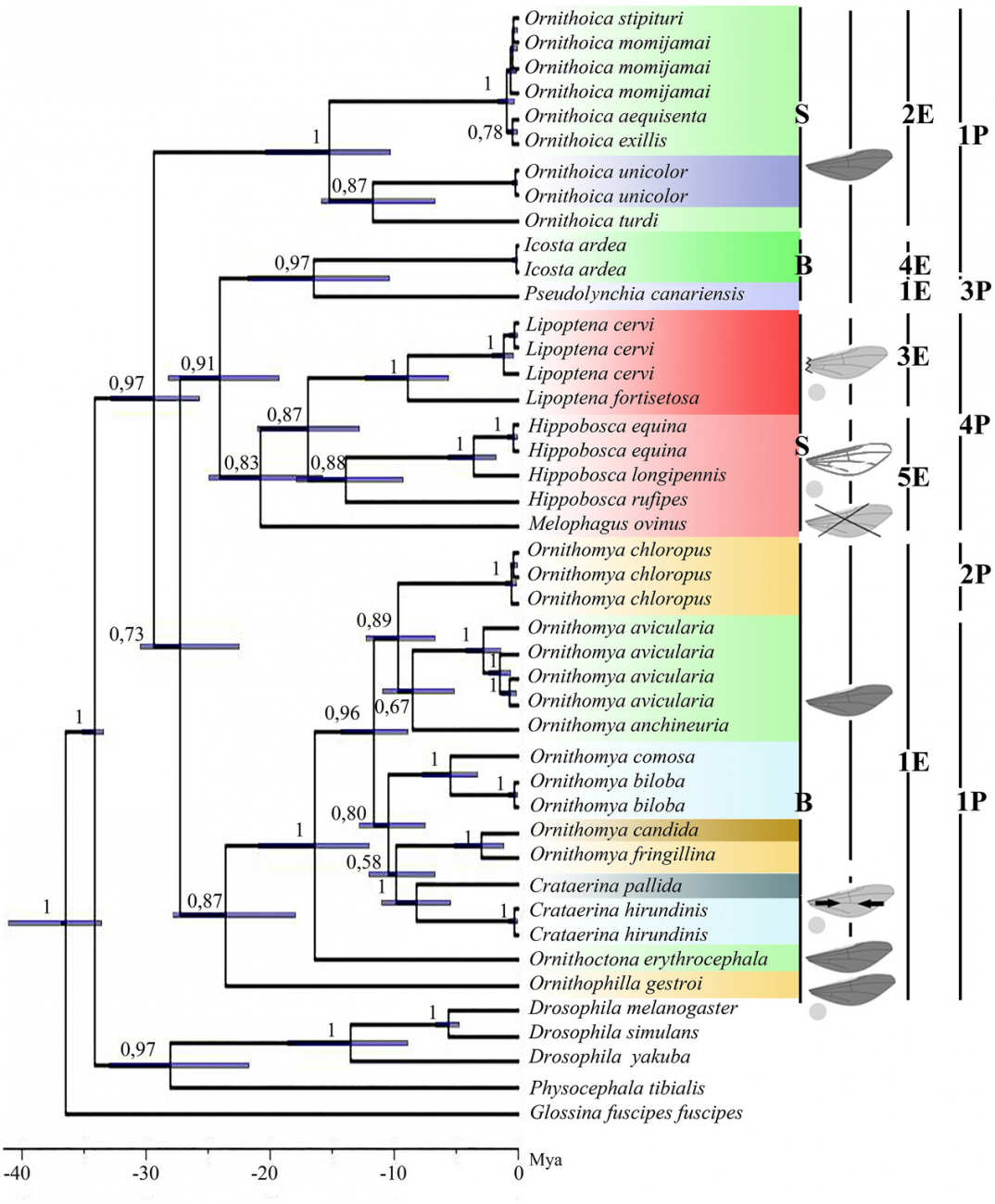
The genera are marked with colors depending on the breadth of the host range. The scale bar shows the divergence estimates in millions of years. #E - empodium morphotype, #P - pulvilli hook morphotype, B - double claw, S - simple claw.
Bloodflies are a highly specialized group of ectoparasites in the family Hippoboscidae. They have a worldwide distribution and are vectors of many dangerous diseases in both mammals and birds. The family is divided into three subfamilies. Lipopteninae and Hippoboscinae are mainly restricted to mammals, while Ornithomyiinae parasitize birds.
Hippoboscidae spend all or most of their lives in the fur or feathers of their hosts and have a large number of unique morphological and physiological adaptations associated with their ectoparasitic lifestyle. Of particular importance are those associated with reliable fixation and efficient movement on the host.
“The attachment apparatus is located on the pretarsus (the end of the tarsus) and consists of paired claws, empodium, and paired pulvilli covered with setaceous formations ending in bilobed hooks. Previously, we identified 6 empodium morphotypes and 4 pulvilli morphotypes,” says Alexandra Yatsuk, PhD in Biology, research fellow at the Institute of Ecology and Evolution of the Russian Academy of Sciences.
Based on a comprehensive analysis of molecular-genetic, morphological, and ecological characteristics of Palearctic bloodsucker species, the phylogenetic structure and trends in the evolution of morphological traits were studied for the first time. It was found that the bird parasites are characterized by forked claws, long hooks on the pulvilli, and long empodium setae (except for the genus Ornithoica). Mammalian parasites are characterized by simple claws, short lobes of hooks on the pulvilli, and zones on the empodium with short setae. Specialization in empodium morphotypes, hooks on the pulvilli, and wing reduction are more divergent in mammalian parasites than in avian parasites.
According to the literature, parasitism in Hypoboscidae began with mammals. However, our data makes it likely that parasites of birds probably appeared in the family earlier than parasites of mammals. Independent adaptation to birds occurred at least 3 times in the evolution of this group. Reduced flight ability and wing reduction independently arose in different subfamilies of Hippoboscidae flies.
The article was published in the journal Wiley: Morphology of the wings and attachment apparatus in the evolution of the family Hippoboscidae (Diptera), Aleksandra A. Yatsuk, Tatiana A. Triseleva, Emilia P. Narchuk, Aleksandr V. Matyukhin, Andrey F. Safonkin.
